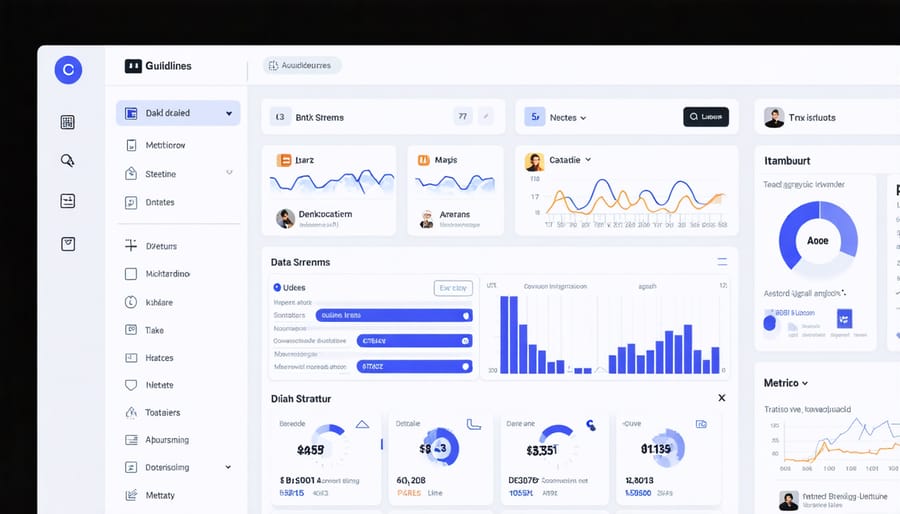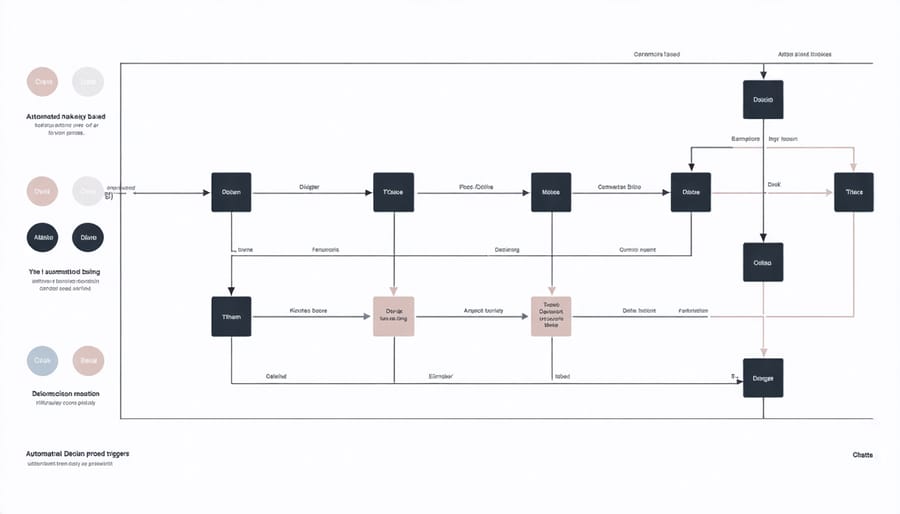Real-Time Data Streaming: Make Better Marketing Decisions in Seconds

Real-time data streaming revolutionizes how businesses make data-driven marketing decisions, transforming raw information into actionable insights within seconds. By processing and analyzing data as it flows, organizations gain immediate visibility into customer behavior, market trends, and operational efficiency.
This instant access to live data empowers marketing teams to pivot strategies mid-campaign, personalize customer experiences on the fly, and identify emerging opportunities before competitors. Unlike traditional batch processing, real-time streaming enables businesses to detect and respond to patterns instantly, reducing decision latency from days to milliseconds.
For modern enterprises, real-time data streaming isn’t just a technological advantage—it’s a competitive necessity. Whether monitoring social media sentiment, tracking website interactions, or analyzing purchase patterns, streaming analytics provide the agility needed to thrive in today’s fast-paced digital marketplace. The ability to harness this continuous flow of information separates market leaders from followers in an increasingly data-driven business landscape.

How Real-Time Data Streaming Transforms Marketing Decisions
Instant Customer Insights
Real-time data streaming transforms how businesses understand and respond to customer behavior by providing immediate, actionable insights. Instead of waiting days or weeks to analyze customer interactions, companies can now monitor engagement patterns, purchase decisions, and website navigation as they happen.
This instant visibility enables businesses to detect trending products, identify potential customer service issues, and spot emerging opportunities within minutes. For example, an e-commerce platform can immediately notice when customers abandon their shopping carts and trigger personalized recovery emails or adjust pricing strategies on the fly.
The real-time nature of streaming data also allows companies to personalize customer experiences dynamically. When a customer browses specific products, the system can instantly recommend related items, adjust website content, or trigger targeted promotions based on their current behavior rather than historical data alone.
By leveraging these immediate insights, businesses can make faster, more informed decisions that directly impact customer satisfaction and revenue generation. This proactive approach to customer understanding helps companies stay ahead of market trends and maintain a competitive edge.
Dynamic Campaign Optimization
Dynamic campaign optimization leverages real-time data streams to make instantaneous adjustments to marketing campaigns, ensuring maximum performance and ROI. By analyzing incoming data from multiple touchpoints, marketers can quickly identify trends, spot opportunities, and address issues before they impact campaign effectiveness.
For example, if streaming data indicates a sudden drop in ad engagement, automated systems can immediately adjust bidding strategies or reallocate budget to better-performing channels. Similarly, when certain audience segments show increased interest, campaigns can automatically scale up targeting for those groups while reducing spend on less responsive segments.
Key benefits include reduced waste in advertising spend, improved conversion rates, and better audience targeting. Modern optimization platforms can process thousands of data points per second, making split-second decisions based on pre-set parameters and machine learning algorithms. This automated approach ensures campaigns remain responsive to market changes while maintaining consistent performance across all channels.
Implementing Real-Time Analytics in Your Marketing Stack
Essential Tools and Platforms
Several powerful real-time analytics platforms have emerged to help businesses harness streaming data effectively. Apache Kafka stands out as an industry standard, offering robust message queuing and data pipeline capabilities that scale seamlessly with your business needs. For organizations prioritizing ease of use, Amazon Kinesis provides a managed solution that integrates smoothly with other AWS services.
Google Cloud’s Pub/Sub offers excellent reliability for companies already invested in the Google ecosystem, while Apache Storm excels in processing complex event streams. For smaller businesses, platforms like Ably and PubNub provide more accessible entry points with user-friendly interfaces and straightforward implementation.
When selecting a tool, consider factors such as:
– Scalability requirements
– Integration capabilities with existing systems
– Cost structure and pricing models
– Technical expertise required for implementation
– Real-time processing speed needs
– Data security features
– Available support and documentation
The right choice ultimately depends on your specific business requirements, team capabilities, and growth projections.

Key Metrics to Monitor
Monitoring the right metrics is crucial for making informed decisions with real-time data streaming. Start by tracking latency, which measures the time between data generation and availability for analysis. Aim for sub-second latency to ensure truly real-time insights.
Data throughput is another vital metric, indicating how much information your system can process per second. Monitor this to prevent bottlenecks and ensure your infrastructure can handle peak loads.
Error rates and data quality metrics help maintain reliability. Track failed messages, data corruption instances, and system downtime to maintain high service levels. Set up alerts for when these metrics exceed acceptable thresholds.
Resource utilization metrics, including CPU usage, memory consumption, and network bandwidth, help optimize system performance and control costs. Monitor these closely to prevent system overload and ensure efficient resource allocation.
Finally, track business-specific KPIs that align with your objectives, such as customer engagement rates, conversion metrics, or transaction processing times. These metrics directly demonstrate the ROI of your real-time streaming implementation and help justify continued investment in the technology.
Turning Real-Time Data into Actionable Insights

Automated Response Triggers
Real-time data streaming enables businesses to set up sophisticated automated marketing responses that trigger instantly based on customer behavior and engagement patterns. These triggers can be configured to respond to specific actions, such as cart abandonment, product page views, or engagement with specific content.
By implementing automated response triggers, businesses can:
– Send personalized product recommendations while customers are still browsing
– Deliver targeted promotional offers based on real-time purchase intent
– Address customer service issues immediately through chatbot interactions
– Launch retargeting campaigns the moment a customer shows interest
To maximize effectiveness, businesses should:
1. Define clear trigger conditions based on customer actions
2. Create relevant response content for each trigger
3. Set appropriate timing delays to avoid overwhelming customers
4. Monitor and adjust trigger parameters based on performance data
Remember to test your automated triggers regularly and ensure they align with your overall marketing strategy. Start with a few essential triggers and gradually expand based on customer response and business needs.
Decision-Making Frameworks
In the fast-paced world of real-time data streaming, having a clear decision-making framework is crucial for marketing success. Start by establishing key performance indicators (KPIs) that align with your business objectives, such as conversion rates, engagement metrics, or customer lifetime value. These KPIs will serve as your north star for quick decision-making.
Create a tiered response system based on data thresholds. For example, minor fluctuations might trigger automated adjustments, while significant changes could require immediate human intervention. This approach ensures consistent and timely reactions to market changes.
Implement a decision tree that maps out specific actions for different scenarios. When customer engagement drops below a certain threshold, your system could automatically adjust ad spend or modify content distribution. For critical decisions, establish a rapid response team with clearly defined roles and responsibilities.
Consider using the “60/30/10 rule” for decision allocation: 60% automated responses, 30% semi-automated decisions requiring minimal human oversight, and 10% fully manual decisions for complex situations. This balance ensures efficiency while maintaining control over crucial marketing choices.
Remember to regularly review and update your decision-making framework based on performance data and changing market conditions.
Real-time data streaming has become an essential tool for modern businesses seeking to make informed, timely decisions. By implementing these systems, you can transform your business operations through instant insights, improved customer experiences, and more efficient processes. The key is to start small, focusing on one or two critical data streams, and gradually expand as your team becomes more comfortable with the technology.
Remember that successful implementation requires clear objectives, the right tools, and a well-trained team. Begin by identifying your most important data sources, selecting appropriate streaming platforms, and establishing meaningful metrics. As you move forward, prioritize data security, maintain system scalability, and regularly review performance against your business goals.
Take the first step today by assessing your current data needs and mapping out a practical implementation strategy. With proper planning and execution, real-time data streaming can give your business the competitive edge it needs in today’s fast-paced market.
Leave a Reply